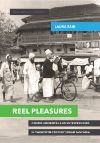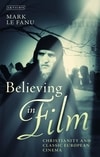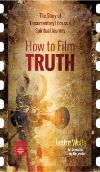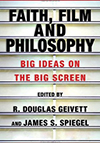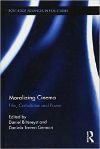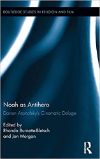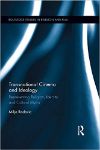Phenomenology in science vs faith (Review of “Knowing”, 2009, US)
How do we know what we know? Usually faith and science gives different answer. “Knowing”, a 2009 movie with Nicolas Cage, conflates the two though and gives a phenomenologically straightforward answer. Through its storytelling it wants to make the unbelievable, usually referred to as magic or miracle, real with the help of the scientific process. Let me outline how it works. This review contains spoilers.
We always start out with own biases, whether we are aware of them or not. In this case it is fleshed out fast for the viewer that the main character is a man of science, a professor at the prestigious MIT. We also learn that he has an adversarial relationship with his father, a man of faith. This is an indirect way to tell us that he is a non-believer. His unfaith is shaken though by the tragedy of losing his wife, the mother of his 10 year old son.
The first step towards believing OR knowing is getting some information. In our case it is an unusual letter from 50 years ago that contains numbers only. For future believers the information that leads to faith could come from clergy, family or personal experience. It is still information though that we would need to process and put it into context and work with to develop our belief system.
The scientific method assumes curiosity as its driving force is questioning what we know and exploring new phenomena. Hence, our professor starts examining the numbers and soon discovers a hidden pattern. This is another commonality between the two realms of life. A lot of scientific discoveries are born when someone (or nowadays artificial intelligence) uncovers a previously unknown pattern and deduces new knowledge from it. At the same time people have been looking for hidden meanings in holy books ever since they were written. E.g. “Bible code” or Kabbalah Code” type of books are all about discovering hidden patterns. Sounds familiar, doesn’t it?
 As we gather more and more information about our research topic OR object of faith we develop our own theories or understanding of the world. If we encounter evidence we discard ideas that were proven incorrect and develop new ones that the new information fits in with. We strive to come to a conclusion that is reconcilable with all known data. That’s how it works in science.
As we gather more and more information about our research topic OR object of faith we develop our own theories or understanding of the world. If we encounter evidence we discard ideas that were proven incorrect and develop new ones that the new information fits in with. We strive to come to a conclusion that is reconcilable with all known data. That’s how it works in science.
Same with faith. If we don’t understand something or it conflicts with previously held tenets and our religion or its authority figures gives a reasonable explanation we can accept it as part of our belief system. In science we say it needs further study, but we accept that the phenomena exists. By the end of the movie our professor accepts not just the suggested inevitable outcome, but also the unbelievable: the explanation of how someone could predict in advance all major catastrophes for 50 years.
Here comes the real spoiler: The aliens did it, they were whispering the information to the chosen one. More specifically four aliens. They didn’t arrive on horses, like the horsemen of the apocalypse, but close enough: on a space chariot; i.e. spaceship. The very last scene is even more biblical. Two innocent children, one male and one female, is running on a field that is suspiciously similar to a romanticized Garden of Eden, it even has a tree of mythological shape and size, see above. Now that you know the end of it, if you watched the movie, you can go back mentally and find all sorts of biblical references. Go for a treasure hunt.
—
Links:
- Watch online, buy BluRay, buy DVD
- IMDB summary: M.I.T. professor John Koestler links a mysterious list of numbers from a time capsule to past and future disasters and sets out to prevent the ultimate catastrophe.
- Trailer:

